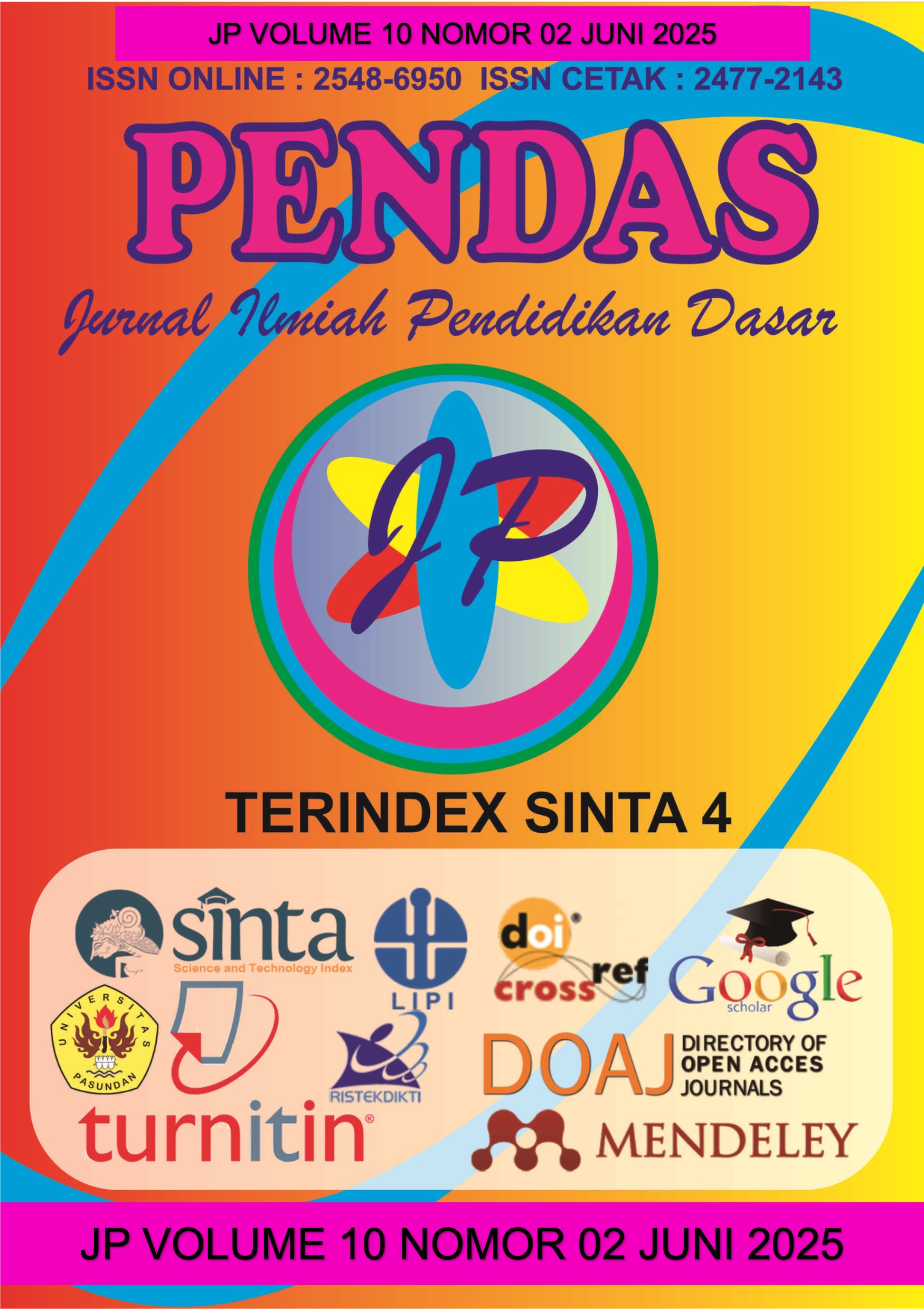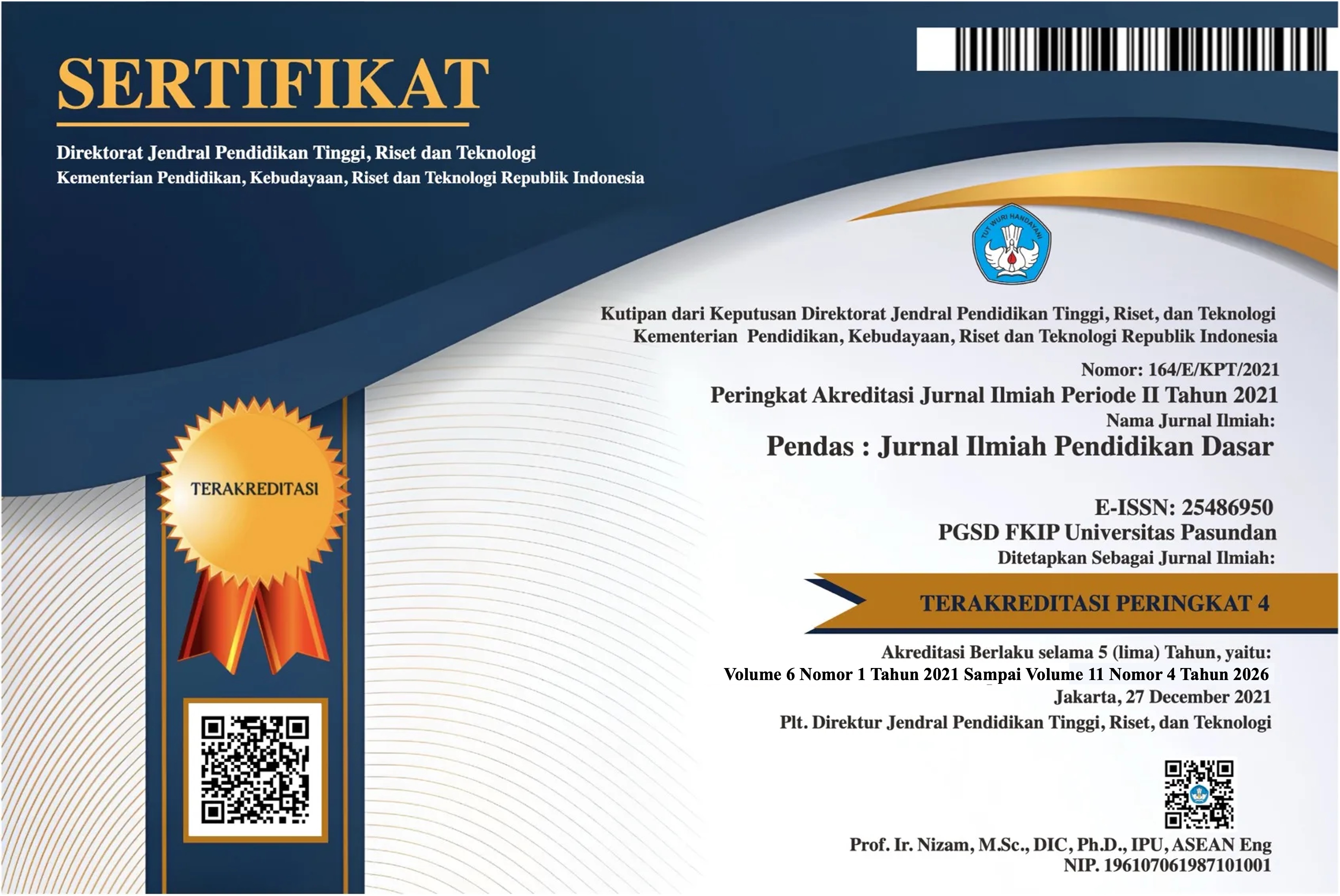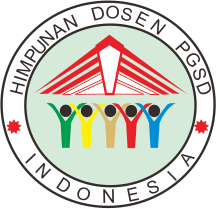PROBLEMATIKA BERBICARA PADA PESERTA DIDIK KELAS 1 SEKOLAH DASAR
DOI:
https://doi.org/10.23969/jp.v10i02.24246Keywords:
speaking, problems, elementary schoolAbstract
This study aims to describe the problems related to speaking skills among elementary school students and to identify the factors contributing to the low proficiency in speaking. Speaking is one of the essential aspects of language learning, as it enables students to express ideas, interact with others, and develop intellectual abilities. However, in reality, many students face challenges in articulating their thoughts verbally, particularly when speaking in public. This research employs a qualitative approach with data collected through direct observation at SDN 1 Jungkare. The observations revealed that several students experience difficulties in speaking, which are caused by various factors such as limited listening and reading skills, low self-confidence, and physical, psychological, linguistic, and neurological factors. These speaking difficulties affect the learning process and students’ academic performance. Therefore, appropriate strategies are needed to overcome these barriers. One proposed solution is to encourage students to actively speak during learning activities, supported by the teacher’s role as a facilitator who can create a supportive learning environment. Through continuous practice and habituation, students are expected to gradually improve their speaking skills. This study highlights the importance of focusing on the development of speaking skills as an integral part of language learning in elementary education.
Downloads
References
Burhan Nurgiyanto, Penilaian Pembelajaran Bahasa, (Yogyakarta: Graha Ilmu 2010) hlm.399
Henry Guntur Tarigan, Berbicara Sebagai Suatu Keteramppilan Berbahasa, (Bandung:
Angakasa, Edisi Tahun 2008) hlm 3
Erwin Harianto, Metode Bertukar Gagasan dalam Pembelajaran Keterampilan Berbicara, Jurnal
Didaktika, Vol 9, No 4, November 2020, hlm 413 Sr. Maria Assumpita Rumanti, Dasar-dasar Public Relation Teori Dan Praktik, (Jakarta: PT.Grasindo, 2002), hlm 159
Cahyani, I., & Hodijah. (2017). Kemampuan Bahasa Indonesia di SD. In Bandung: UPI Press
Khair, U. (2018). Pembelajaran Bahasa Indonesia dan Sastra (BASASTRA) di SD
an MI. AR-RIAYAH : Jurnal Pendidikan Dasar, 2(1), 81. https://doi.org/10.29240/jpd.v2i1.261
Tektigul, Z., Bayadilova-Altybayeva, A., Sadykova, S., Iskindirova, S., Kushkimbayeva, A., &
Zhumagul, D. (2023). Language is a Symbol System that Carries Culture. International Journal of Society, Culture and Language, 11(1), 203–214. https://doi.org/10.22034/IJSCL.2022.562756.278
Sandhi, A. M., Djuanda, D., &
Sunarya, D. T. (2017). Penerapan Metode Think Pair Share dengan Media Audio Visual untuk Meningkatkan Keterampilan Berbicara. Jurnal Pena Ilmiah, 2(1), 1641. https://ejournal.upi.edu/index.php/penailmiah/article/view/10477/6472
Hardini, S., & Sitohang, R. (2019).
THE USE OF LANGUAGE AS ASOCIALCULTURALCOMMUNICATION. Jurnal Littera: Fakultas Sastra Darma Agung, 2019(2157), 1–57
Delvia, R., Taufina, T., Rahmi, U.,
& Zuleni, E. (2019).
Peningkatan Keterampilan
Berbicara Siswa dengan Bercerita di Sekolah Dasar. Jurnal Basicedu, 3(4), 1022–1030.
https://doi.org/10.31004/basicedu.v3i4.230
Kaunang, M., & Merentek, R. M.
(2023). Peningkatan Keterampilan Berbicara Siswa Melalui Strategi Peer Lessons Dalam Pembelajaran Bahasa Indonesia di Kelas IV Sekolah Dasar. Jurnal Ilmiah Wahana Pendidikan, 9(April), 605–609. https://doi.org/https://doi.org/10.5281/zenodo.7827276 p-ISSN
Downloads
Published
Issue
Section
License
Copyright (c) 2025 Pendas : Jurnal Ilmiah Pendidikan Dasar

This work is licensed under a Creative Commons Attribution 4.0 International License.



















